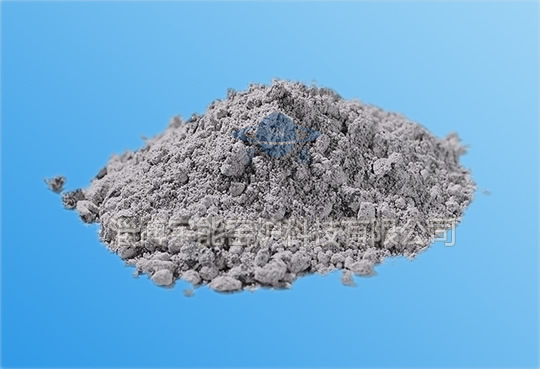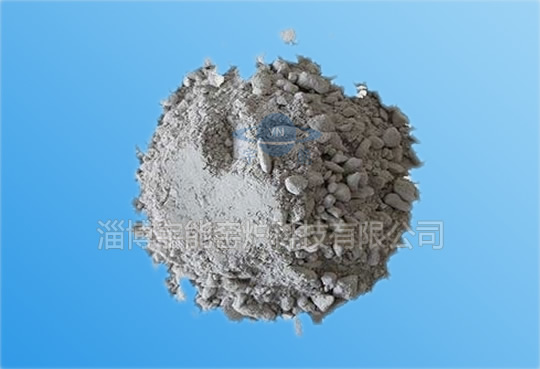Zibo Yunneng Kiln Technology Co. Ltd. Zibo Yunneng Kiln Technology Co. Ltd.
Free delivery samples
high quality assurance
Engineer's door-to-door guidance
lifelong technical support
Contact us+86159669653330086-533-5331887
Zibo Yunneng Kiln Technology Co. Ltd. Zibo Yunneng Kiln Technology Co. Ltd.
Free delivery samples
high quality assurance
Engineer's door-to-door guidance
lifelong technical support
Contact us+86159669653330086-533-5331887
Home -> News -> News -> Industry News ->
The third secretary-general meeting of the geological and mineral branch of China nonferrous metals industry association was held on March 13, 2014.A total of 53,900 meters of pit exploration work was done, 1,392,000 cubic meters of trough exploration work was done, and 17,400 meters of well exploration work was done.
According to incomplete statistics, in 2014, China's nonferrous geological prospecting teams implemented 2,253 new and continued geological projects, submitted 1,988 geological reports, and added a batch of nonferrous mineral reserves (metal quantity) : 198.7 million tons of copper;Lead and zinc 2,871,800 tons;1921,500 tons of tungsten;Molybdenum 718,300 tons;125,500 tons of tin;Antimony 67,500 tons;Nickel 52,800 tons;780.10 tons of gold;3276.38 tons of silver;Bauxite (ore volume) 110.88 million tons.
But the situation that nonferrous geological prospecting team faces is not optimistic.Participants pointed out that the decline of financial investment, weak social investment and unit benefit decline have become three prominent characteristics of the new normal of geological work.According to incomplete statistics, in 2014, China's nonferrous geological prospecting units received 494 million yuan and 829 million yuan respectively from the central and local financial channels, a decrease of 23.25% and 5.72% respectively over the previous year.The revenue of the social and geological work projects it undertook reached 3.991 billion yuan, 30.74% less than that of 2013.With the decrease of both financial and social capital input, the total income and profit of the nonferrous geological prospecting teams in China have also decreased significantly.In 2014, the total economic revenue and profit of nonferrous geological prospecting teams in China reached 26.188 billion yuan and 1.194 billion yuan, respectively, down 28.33% and 38.32% from the previous year. Nonferrous metals refer to all metals other than ferrous metals composed of iron, manganese and chromium.It is an indispensable and important material for the development of modern industry, modern national defense and modern science and technology.Although the current nonferrous metal industry operation continues to show a steady to good situation, but the steady to good foundation is still not stable.Affected by the economic environment, the price of non-ferrous metals is still low, the business situation of enterprises is still not significantly changed, the profit of main business activities of enterprises is still declining, the market order is still to be standardized, high-end innovation and industrialization capacity is still insufficient.The following is an analysis of the current situation of China's nonferrous metals industry in 2014: First, overcapacity in the smelting industry remains a serious problem This has become the most prominent problem in China's nonferrous metal industry.At present, most domestic industries have excess smelting capacity, especially the problem of excess electrolytic aluminum capacity is prominent, the expansion of production capacity is more serious in xinjiang, Inner Mongolia and shandong. According to the recent verification, the current production capacity of electrolytic aluminum in China has reached 31 million to 32 million tons, and the overcapacity is aggravated. At the same time, there are three power supply modes of electrolytic aluminum enterprises in China: power purchase by grid, self-provided power plant and direct power supply. Due to the reasons of China's power system, the current power grid price is much higher than that of self-provided power plant, which encourages competing construction of electrolytic aluminum in regions with electricity price advantages.This leads to the disorderly expansion of production capacity in many areas with electricity price advantages, and also makes many backbone enterprises that lack electricity price competitiveness suffer serious losses.Therefore, China's aluminum industry is in urgent need of establishing a fair and reasonable competition environment, promoting fair competition of electricity price and reducing unfair competition caused by institutional factors. Second, the ability to develop high-end products is weak, and industrial structural problems are prominent China's non-ferrous metal industry has a weak ability to develop high-end products, and is on the whole in the middle and low end of the international non-ferrous metal industry chain. It is urgent to improve independent innovation ability and high-end product development ability.Data show that from January to November 2013, the average export price of copper and aluminum in China was 8,555 usd/ton and 3,402 usd/ton respectively, and the average import price was 9,950 usd/ton and 6,307 usd/ton respectively. The import price was 1.16 times and 1.85 times of the export price respectively.Affected by the slowdown of world economic growth and weak demand in major economies, the domestic and foreign market demand for non-ferrous metals has declined significantly. In terms of major non-ferrous metals, the import and export volume of copper and aluminum products declined from January to November. Third, production costs are high, enterprises lack competitiveness, operating difficulties, weak ability to resist risks Except a handful of firms, the current domestic most smelting enterprises lack of self-provided mine or only a small amount of self-provided mine, most need to outsourcing raw material, smelting enterprise economic benefit is poor, such as lead and zinc smelting industry profits accounted for only 20% of lead and zinc industry, selecting profits accounted for 80%, electrolytic aluminium industry has own electricity capacity only accounts for the total capacity of up to 45%, the net electrical electrolytic aluminium enterprises loss was serious. In recent years, China's non-ferrous metal production capacity is expanding rapidly, but the labor productivity, capital profit rate, science and technology content has not been increased at the same time, coupled with the industry overcapacity, resource and environmental constraints rise, low price shock, enterprise operation is very difficult, in the east and central part of the high electricity price area electrolytic aluminum enterprises have stopped production.According to statistics, from January to October, the main business cost of 8,524 non-ferrous metal industrial enterprises above the designated size (excluding independent gold enterprises) was 358.48 billion yuan, up 14.7% year-on-year.At the end of October, the number of 8,524 non-ferrous metal industrial enterprises above designated size was 1,726, 57 more than the same period last year, with a loss margin of 20.2%.Loss-making enterprises lost 30.34 billion yuan, up 0.1% year-on-year. For more detailed reports on the nonferrous metal industry, please refer to the "2014-2019 China nonferrous metal industry market status and investment strategy analysis report" issued by market researchers of yupriz. 2014 China nonferrous metals industry development outlook: maintain steady growth business difficulties difficult to change in the short term It is expected that in 2014, the production of non-ferrous metals is still growing steadily, with the output growth of ten non-ferrous metals at about 8%.The price of main nonferrous metals in the domestic market is still in a shock pattern, and it is unlikely to drop or rise significantly again.Nonferrous metal enterprises operating difficulties in the short term difficult to change the situation, the realization of profit again greatly reduced the possibility is not.Specific as follows: First, the macro environment affecting the development of nonferrous metal industry has changed In terms of the domestic macro environment, it is a foregone conclusion that China's GDP will grow by more than 7.5% in 2013 and the annual plan will be fulfilled.After more than 30 years of rapid growth in reform and opening up, China has entered a new stage of structural transformation, during which new changes have taken place in the conditions of labor force, land and market.At present, domestic economic growth is still within a reasonable range, and there will be no large-scale fiscal stimulus.In terms of the international environment, the us economy is recovering slowly, the European economy is also showing signs of recovery, and the Japanese economy has rebounded, but the world economy is generally recovering slowly.In addition, some countries have implemented ultra-quantitative easing monetary policy, which has forced the appreciation of the RMB. China's labor price is also rising, and the export of non-ferrous metal products is becoming more difficult. Second, it is difficult to solve the problems of industrial restructuring and overcapacity in the short term The industry chain of non-ferrous metals is "large in the middle and small at both ends", with excess smelting capacity, insufficient mine support capacity, and shortage of high value-added products.The us and Europe are advocating the return of industry. Emerging economies and China are facing homogenized competition. There will be more trade frictions and difficulties in transferring production capacity abroad.The problem of unreasonable structure and overcapacity is difficult to solve in a short time. Third, pressure on resources, energy and the environment has increased China's non-ferrous metal resources are relatively poor, quality is not high, external dependence is large, not only high cost, but also controlled by others.High energy prices, energy policy orientation is not conducive to the development of the non-ferrous metal industry, the public opinion is not very familiar with the non-ferrous metal industry, only know that the production of non-ferrous metal high energy consumption, not know the use of link is energy saving. Fourth, non - ferrous metal prices rebound weakness The federal reserve monetary policy turns, the dollar strengthens, gold, copper and other metals of the financial property weakened, do not support the rise in the price of dollar-denominated metals.The world's production capacity and output of nonferrous metals are growing faster than the demand, and the global supply of nonferrous metals has exceeded demand, which does not support the rise in prices of nonferrous metals.Non-ferrous metal prices continue to be low and volatile, domestic electricity, environmental protection, labor costs rise, non-ferrous metal enterprises operating difficulties are still greater pressure. |
Relevant Product Display
 LT-5C Series of heat-resistant and wear-resistant single layer lining ..
LT-5C Series of heat-resistant and wear-resistant single layer lining ..
 High wear and erosion resistant castable G-17M
High wear and erosion resistant castable G-17M
 LT-4C Series of lightweight heat insulating lining castings
LT-4C Series of lightweight heat insulating lining castings
 Series of iron ditch castable for 2000 cubic blast furnace
Series of iron ditch castable for 2000 cubic blast furnace
Relevant information
Hotline